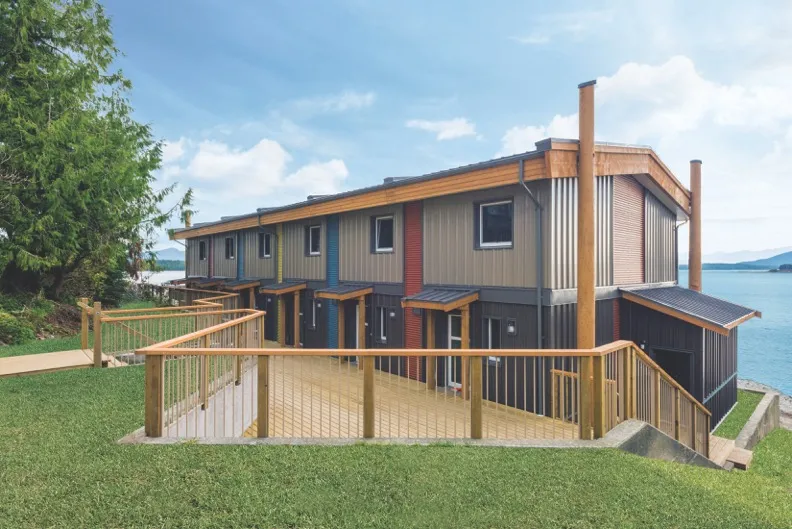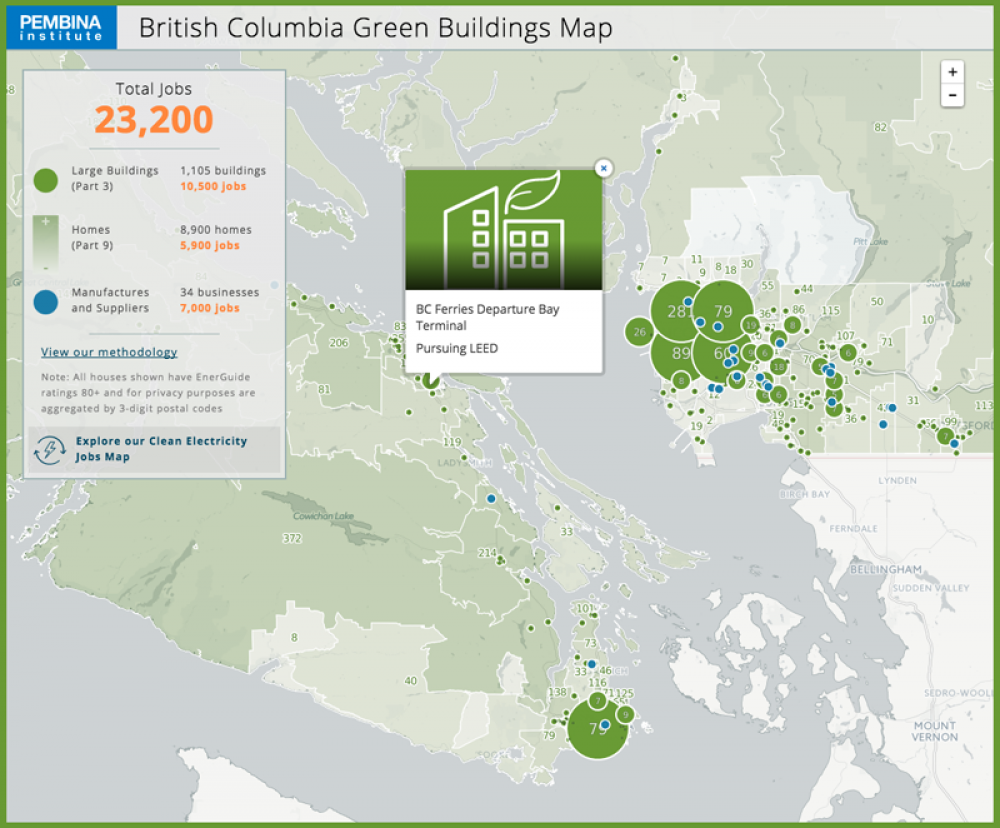B.C. premier Christy Clark has sure talked a lot about saying yes of late.
“To grow and diversify our economy, we must have the courage to say yes,” her government’s throne speech declared in February. “Yes to recognizing that economic development and environmental protection go hand in hand. Yes to planning for future growth and creating a climate where job-creating businesses can thrive.”
Let’s hope Clark has the foresight to say yes to growing B.C.’s green building sector. After all, constructing new buildings and upgrading existing buildings to super energy-efficient standards is a cost-effective way to create jobs and curb carbon pollution.
In B.C., the green building sector already supports more than 20,000 jobs. The right vision, a strong Climate Leadership Plan and sufficient investment will ensure this sector of the clean economy continues to thrive and expand.
As the government moves toward a new climate plan, we’ve seen green buildings gain momentum in B.C. Passive House, the leading standard for super energy-efficient buildings, has debuted in a number of different contexts around the province. Last fall, Vancouver Coastal Health staff in Bella Bella, on B.C.’s central coast, moved into Canada’s first fully modular Passive House building. As well, a Vancouver developer broke ground on the city’s first Passive House multi-unit residential building, billed as the largest of its kind in the country.
Since B.C. started working on the follow-up to its 2008 Climate Action Plan, Alberta committed to phasing out coal, and Canada signed on to the Paris Agreement — the goal being to limit global temperature rise to 2 C (and ideally 1.5 C). Now it’s B.C.’s turn to impress the world with an ambitious and bold plan for climate action.
Fortunately, we have a strong foundation to build on. B.C.’s 2008 climate plan introduced widely lauded measures such as the carbon tax and low carbon fuel standard.
In November, the provincial government released a package of recommendations from the Climate Leadership Team, a panel of experts from the business, academic and environmental communities and representatives from the provincial government, First Nations and local governments. The team recommends halving emissions from buildings by 2030.
The Pembina Institute, in partnership with Architecture Canada and the Urban Development Institute Pacific Region, initiated a Call for Action on Climate and Energy in the Buildings Sector to give the province a nudge on the specific actions need to significantly drive down emissions from the buildings sector. Over 90 signatories — including developers, architects, local governments, universities, professional associations and non-profits — supported the call for action, which is consistent with the team’s recommendations and lays out a pathway to achieve them.
Our call for action asked the provincial government to:
- Set a clear target for the end performance goal for new buildings — for example, for new buildings to be net-zero energy ready by 2030 — and work with stakeholders to develop, within six months of the release of the plan, a roadmap clarifying the timeline and approach to meet this goal;
- Lead by example by requiring that all new planned public buildings meet this goal starting in 2016, and by setting up an aggressive renovation program for existing public buildings to reduce their carbon emissions by half in the next decade;
- Launch a multi-year incentive program to accelerate market transformation for high performance new construction and deep retrofits, prioritizing affordable housing and high visibility projects.
We also requested the development of financing mechanisms to redistribute the costs of energy-efficient construction, public access to data on energy use, support for integrated land use and transportation planning, stronger carbon pricing, and adequate resources for local governments to implement climate solutions for buildings.
No funds were specifically earmarked for implementing the Climate Leadership Plan in the 2016 B.C. budget released in February. This may make it tough for B.C. to regain its leadership position on climate action. With the second round of public consultation toward the plan ending March 25, it is crucial that we resoundingly tell the government to say yes to a clean economy that includes key measures to curb emissions from buildings.
How can you help? Write to the government via the Climate Leadership Plan website. See our call for action for key recommendations on buildings. For next steps in other areas, check out the Pembina Institute’s submission. (Feel free to use this information in your own submissions.) Lastly, don’t keep this all to yourself — share this news with your colleagues and encourage them to write to the government and to sign on to our call for action.
With the lifetimes of buildings spanning decades, we need to think about the long-term impact that they will have on our climate. If buildings with conventional energy-efficiency continue to be built and aren’t upgraded or torn down for 20 to 30 years, we’ll be stuck with energy-sucking buildings that do nothing to help us curb our emissions.
So let’s think big and have the courage to say yes to a bold Climate Leadership Plan.
Want more information and updates on the B.C. Climate Leadership Plan from the Pembina Institute? Please sign up by emailing ClimateLeadership@pembina.org.









